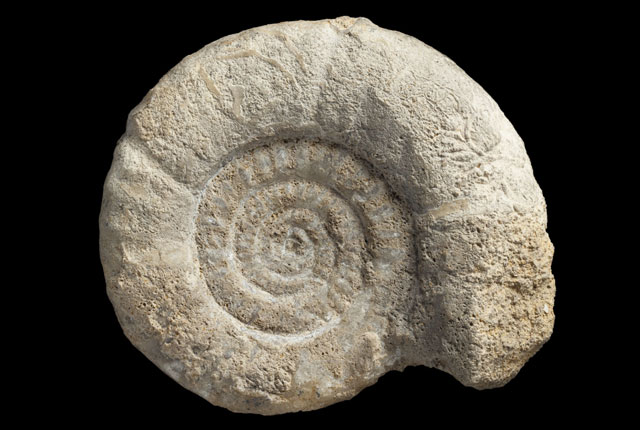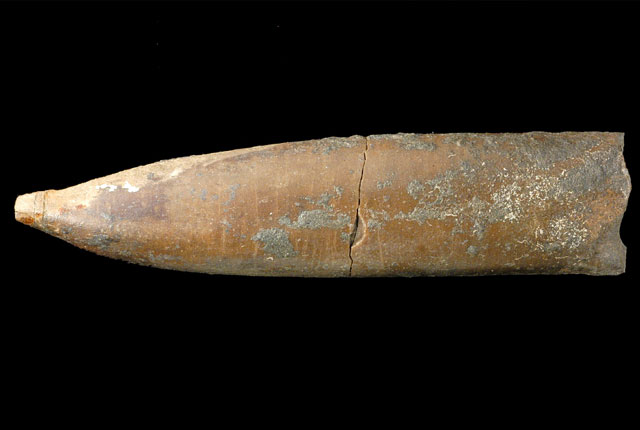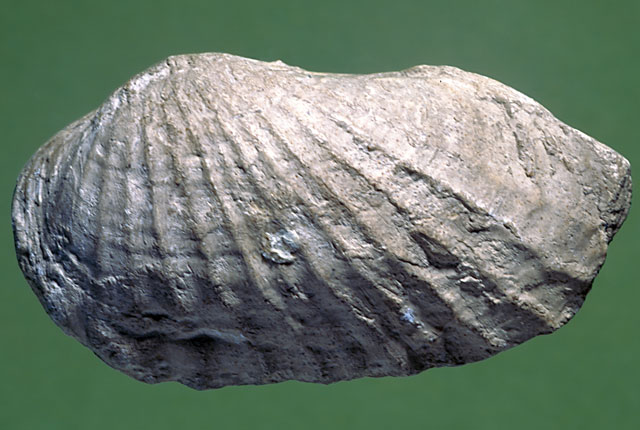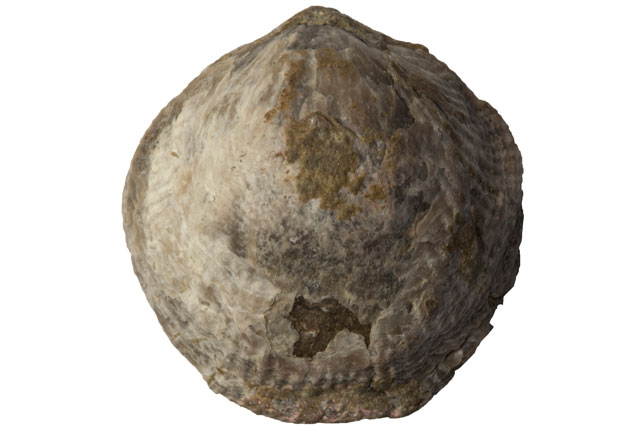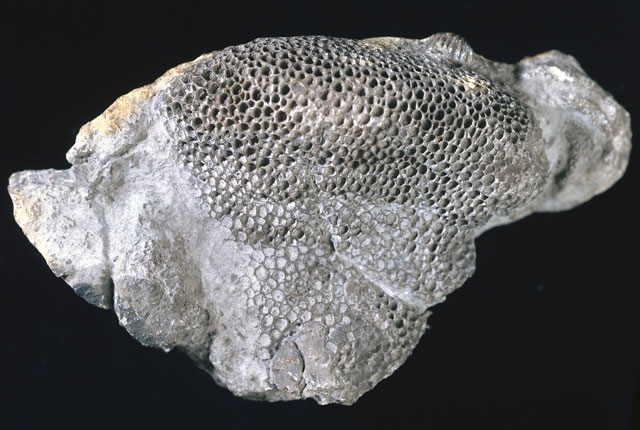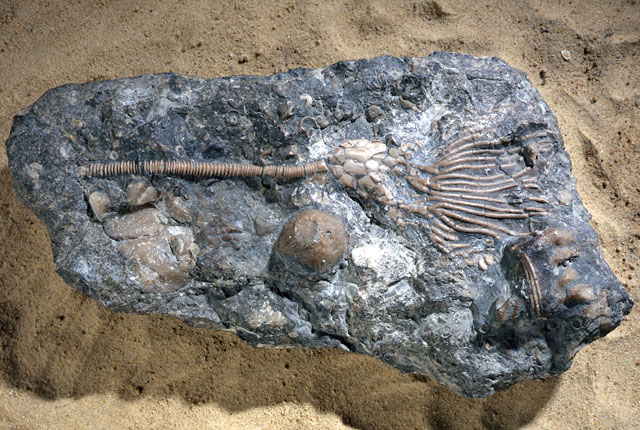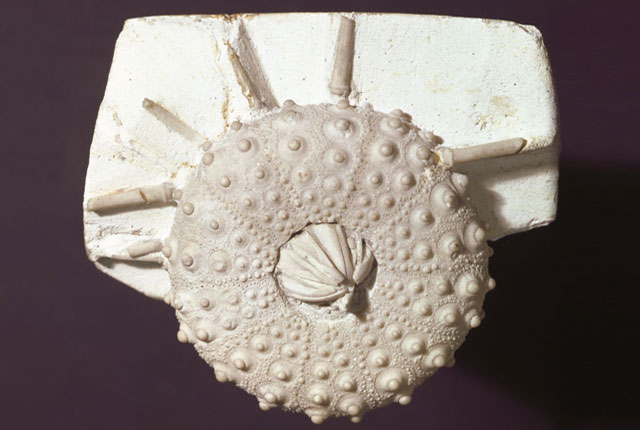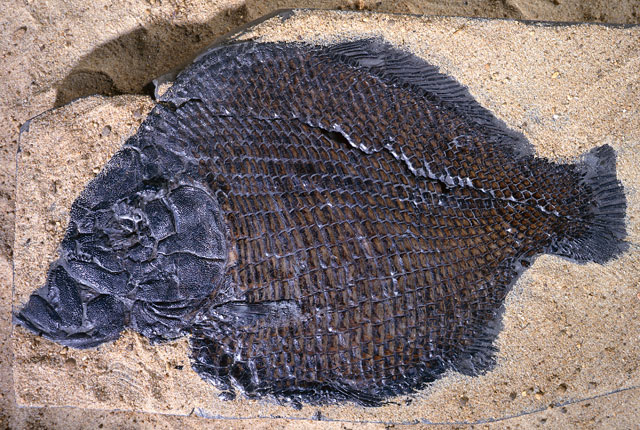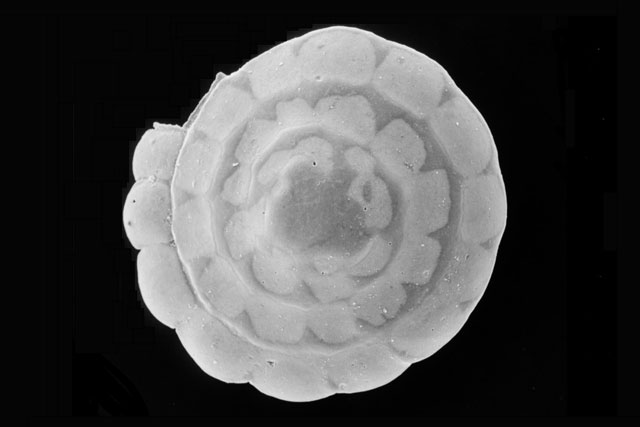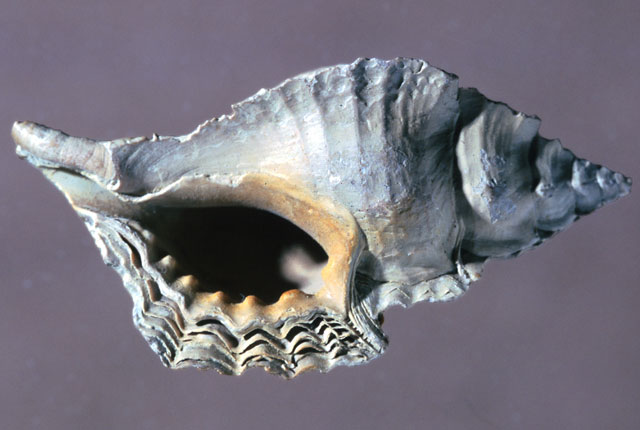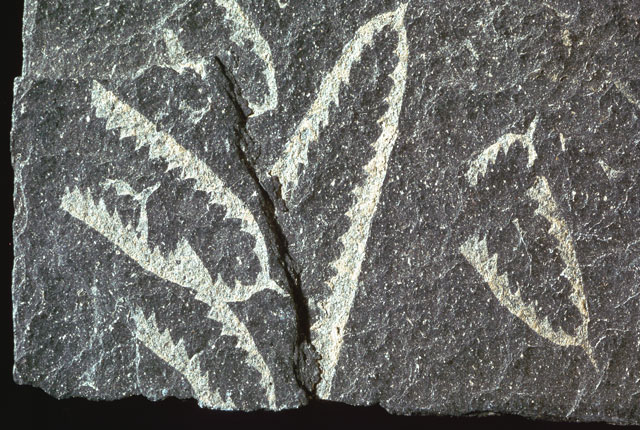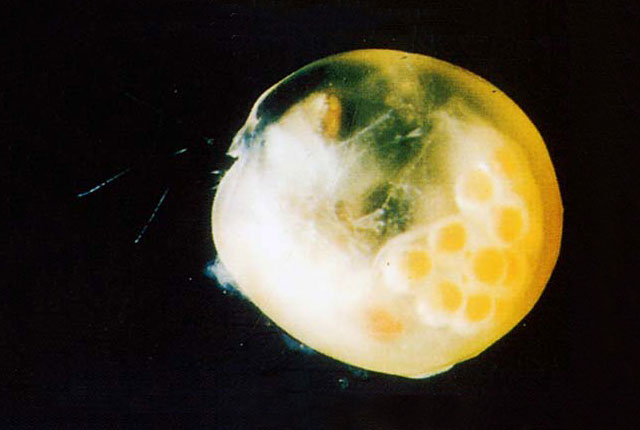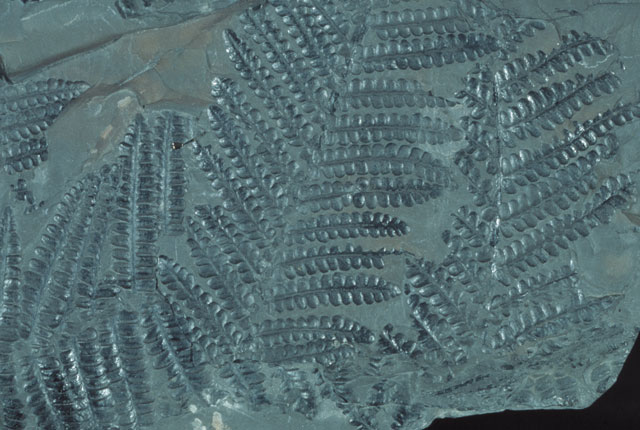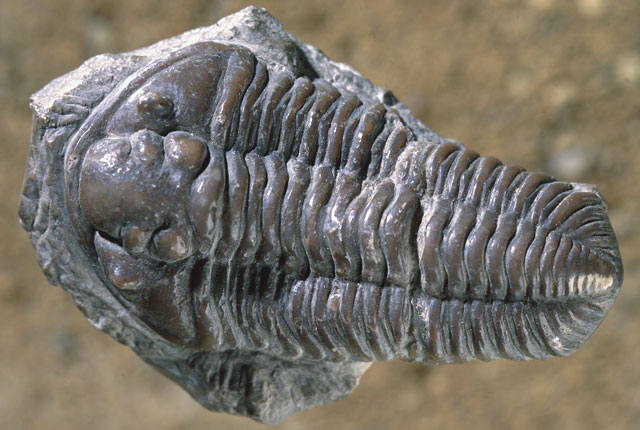What is a fossil?
Fossils are the preserved remains of plants and animals whose bodies were buried in sediments, such as sand and mud, under ancient seas, lakes and rivers. Fossils also include any preserved trace of life that is typically more than 10 000 years old.
Soft body parts decay soon after death, but the hard parts, such as bones, shells and teeth can be replaced by minerals that harden into rock. In very exceptional cases, soft parts like feathers, plant ferns or other evidence of life, such as footprints or dung, may also be preserved. Remains can include microscopically small fossils, such as single-celled foraminifera or pollen grains, as well as more familiar fossils such as ammonites and trilobites.
Fast fact
The word fossil is derived from the Latin fossilis meaning ‘unearthed’.
Preserved evidence of the body parts of ancient animals, plants and other life forms are called ‘body fossils’. ‘Trace fossils’ are the evidence left by organisms in sediment, such as footprints, burrows and plant roots.
Why do we study fossils?
Fossils give us a useful insight into the history of life on Earth. They can teach us where life and humans came from, show us how the Earth and our environment have changed through geological time, and how continents, now widely separated, were once connected.
Fossils provide important evidence for evolution and the adaptation of plants and animals to their environments. Fossil evidence provides a record of how creatures evolved and how this process can be represented by a ‘tree of life’, showing that all species are related to each other.
Fossils can also be used to date rocks. Through the process of evolution, different kinds of fossils occur in rocks of different ages, enabling geologists to use fossils to understand geological history. For geologists, fossils are one of the most important tools for age correlation. Ammonites, for example, make excellent guide fossils for stratigraphy; they can be used to determine the relative age of two or more layers of rock, or strata, that are in different places within the same country or somewhere else in the world.
Fossils can be used to recreate different worlds like worlds populated by dinosaurs or dragonflies with a two-metre wing span.
How do fossils form?
Fossils are typically found in sedimentary rocks and occasionally some fine-grained, low-grade metamorphic rocks. Sometimes the fossils have been removed, leaving moulds in the surrounding rock, or the moulds may have later been filled by other materials, forming casts of the original fossils.
Rapid burial by sediments that were previously suspended in water is required for fossilisation to occur. The burial process isolates the remains from the biological and physical processes that would otherwise break up or dissolve the body material.
Fossils are more likely to be preserved in marine environments for example, where rapid burial by sediments is possible. Less favourable environments include rocky mountaintops where carcasses decay quickly or few sediments are being deposited to bury them.
There are four main ways of describing fossil preservation:
Petrification
The most common method of fossilisation is petrification through a process called permineralisation. After a shell, bone or tooth is buried in sediment, it may be exposed to mineral-rich fluids moving through the porous rock material and becomes filled with preserving minerals such as calcium carbonate or silica. Eventually, the minerals entirely replace the organic material and the remains are literally turned into stone or ‘petrified’. (Petra was the Latin word for rock or stone.)
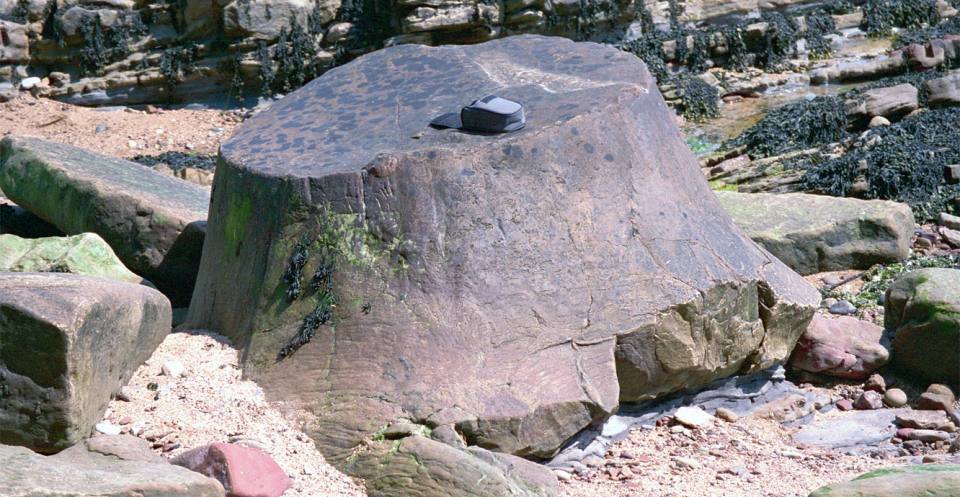
This tree stump, found in East Fife, Scotland, is a good example of a petrified tree fossil produced by permineralisation. BGS © UKRI.
Compression
Some fossils form when their remains are compressed at depth. A dark imprint of the fossil is produced as a result of high-pressure forces exerted by the weight of overlying sediments and perhaps sea water.
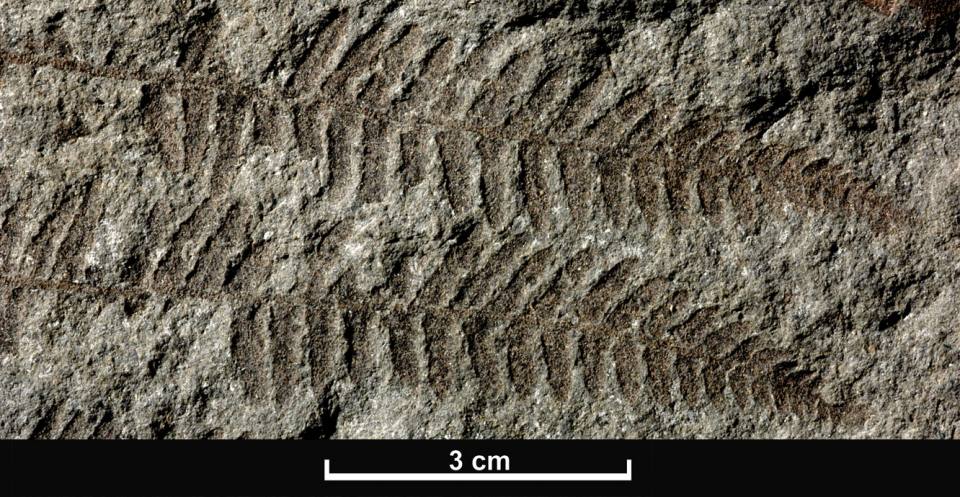
Plant leaves and ferns are good examples of fossils produced by compression. This image shows Coniopteris, which is a type of true fern, or pteropsid, fossil from the Jurassic Period. More about fossil plants. BGS © UKRI.
Moulds and casts
In cases where the original shell or bone is dissolved away, it may leave behind a space in the shape of the original material called a mould. At some point in the future, sediments may fill the space to form a matching cast. Soft-bodied sea creatures such as snails are commonly found as moulds and casts because their shells dissolve easily. A cast is a positive impression of the original material formed by contact with the mould. More about gastropods.
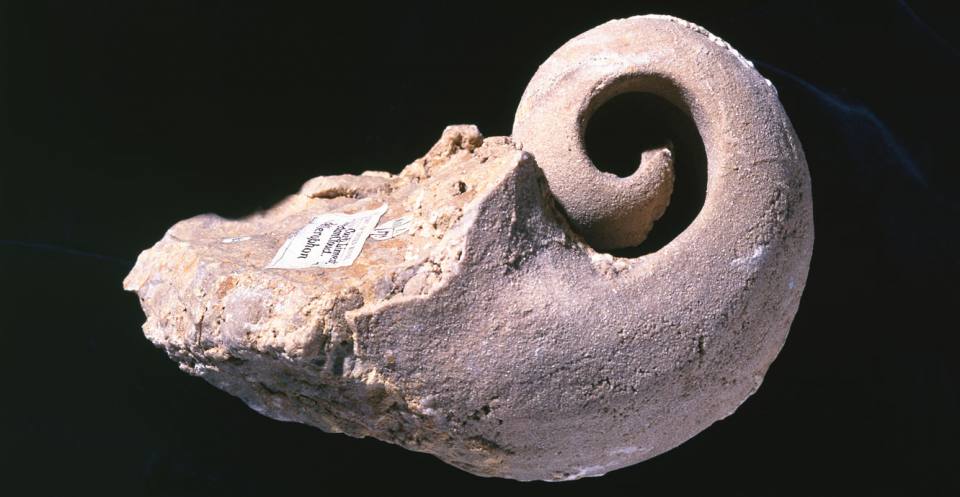
This image is a mould of an ancient snail or slug called Bellerophon, a gastropod. Fossils can form when mould of the interior of the shell is made by water-borne minerals percolating through it, but later the shell material dissolves away. BGS © UKRI.
Preserved remains
The rarest form of fossilisation is the preservation of original skeletons and soft body parts. Insects that have been trapped and preserved perfectly in amber (fossilised tree resin) are examples of preserved remains.
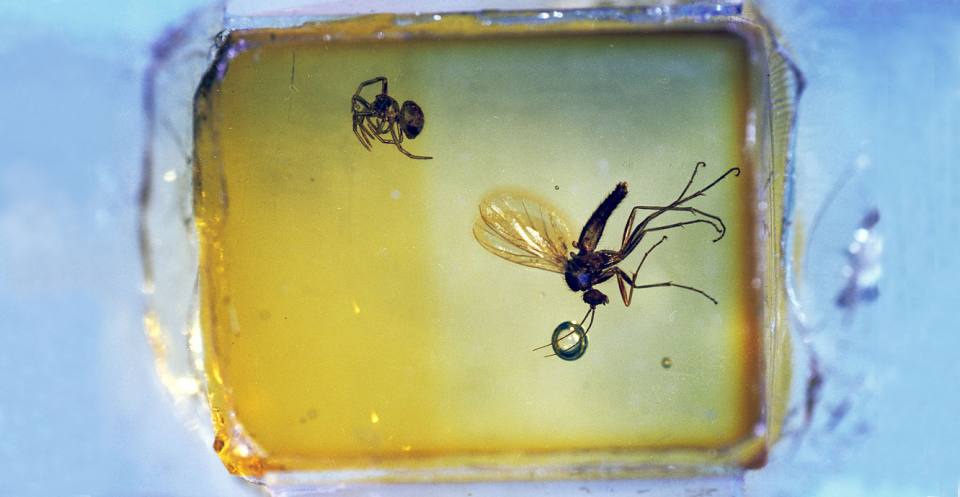
A fly and spider trapped in amber. Many different animals have been fossilised in amber, from flies and mosquitoes to spiders and snails, and, in very rare instances, ostracods. BGS © UKRI.
You may also be interested in

Discovering Geology
Discovering Geology introduces a range of geoscience topics to school-age students and learners of all ages.
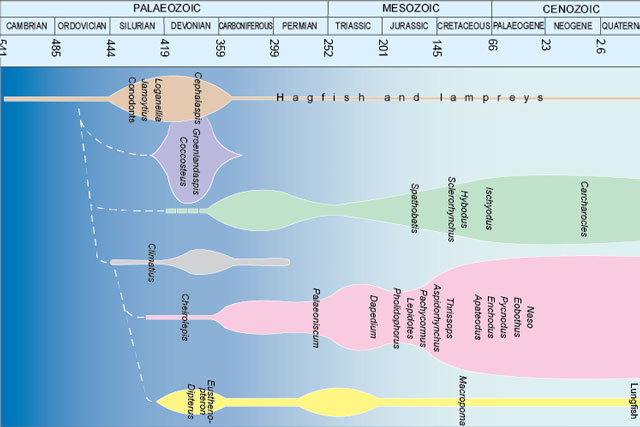
Fossils and geological time
Take a look at the history of the Earth, from its formation over four and a half billion years ago to present times.





